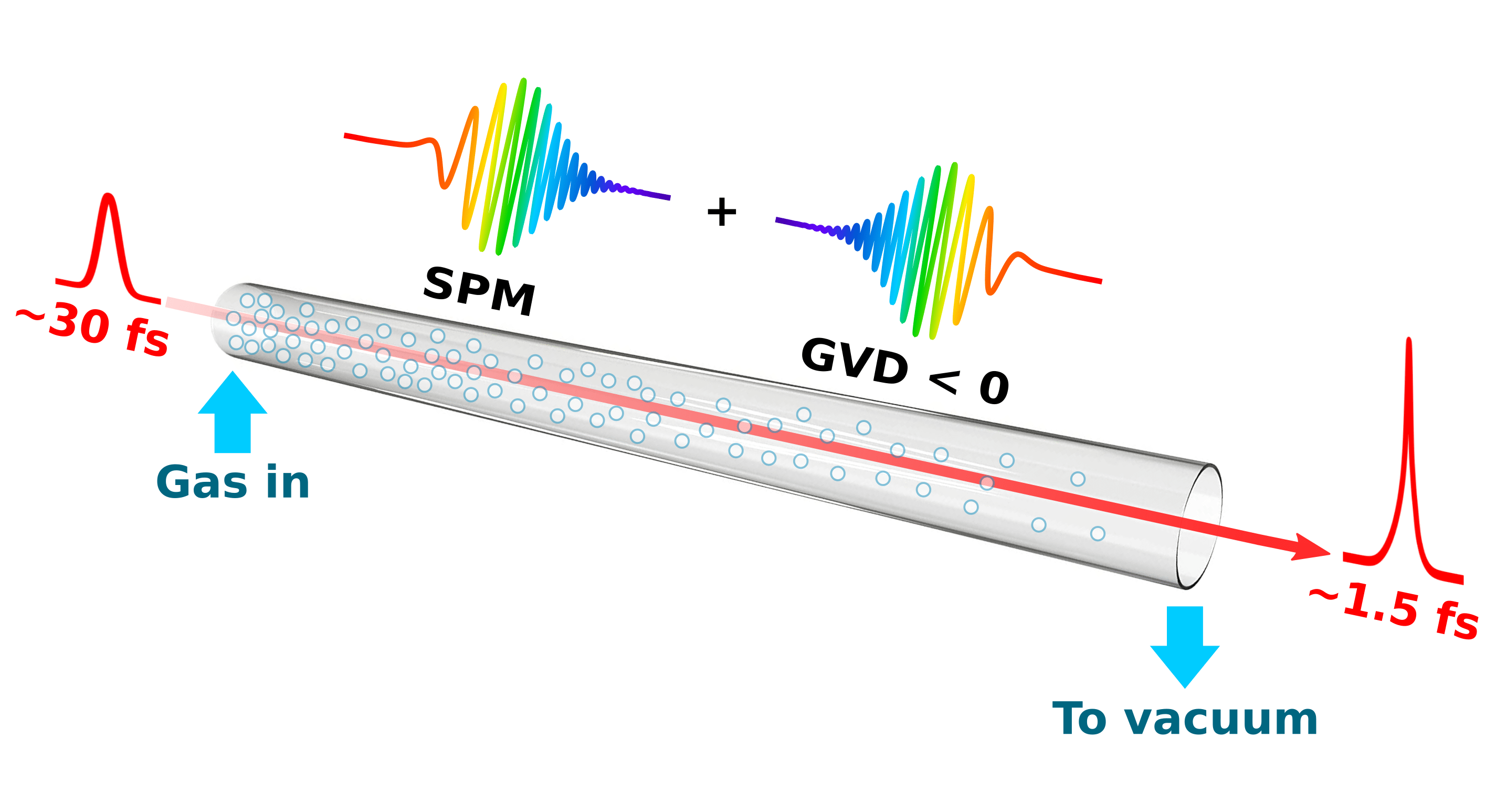In spite of having an extremely short life, of just a few quadrillionths of a second, ultrashort femtosecond laser pulses have become an indispensable tool in many areas of science and technology, as they allow to probe the most fundamental properties of matter on ultrafast time scales.
Generating these such short pulses of light in a controlled manner and with a good quality is not an easy task, and in the last years various strategies have been proposed. The main idea is to generate a very wide light spectrum, made up of many frequencies, by means of nonlinear processes starting from a narrower one, and then correcting its phase to synchronize all the frequencies, giving rise to an ultrashort pulse. A widely used method to achieve this large spectral broadening is to propagate an initial light pulse through a hollow cylindrical fiber filled with a gas. In this case, one of the parameters that most influences the propagation is the pressure of the filling gas, which allows for a continuous tuning of the dispersion and the intensity of the nonlinear effects experienced by the pulse. In particular, if the fiber and gas parameters are carefully chosen, the incident pulse can broaden its spectrum while correcting its phase due to the interaction between the linear and nonlinear processes. In this way, the pulse reduces its duration on its own, in a process known as soliton self-compression.
Usually, these experiments are carried out keeping the gas at constant pressure, homogeneously filling the fiber. However, in one of our latest studies we have shown that applying a decreasing pressure gradient, causing the gas concentration to gradually decrease during propagation, can improve the quality of the self-compressed pulses and reduce their duration even more than constant pressure.
You can look up for all the details of this work at:
F. Galán, E. C. Jarque, and J. San Roman, Optimization of pulse self-compression in hollow capillary fibers using decreasing pressure gradients, Optics Express 30(5), 6755–6767 (2022). https://doi.org/10.1364/OE.451264


Leave a Reply